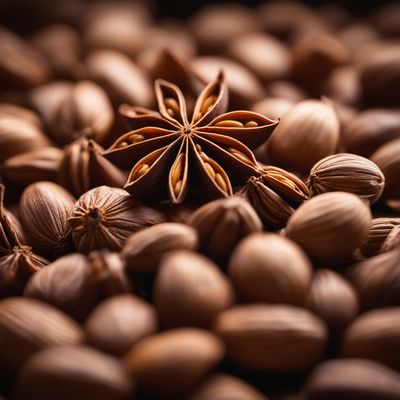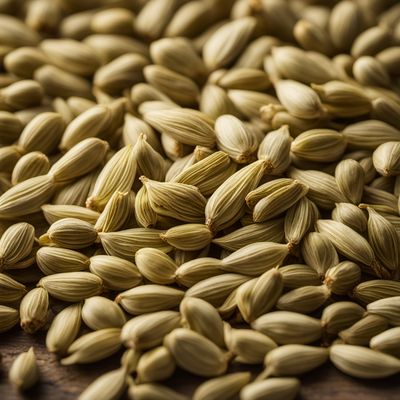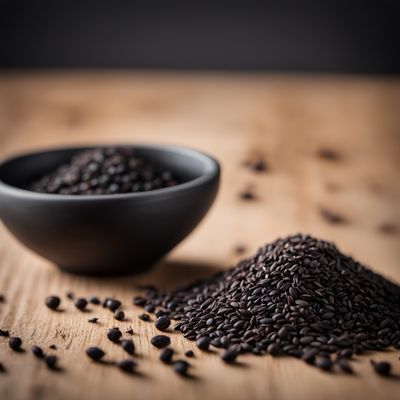
Ingredient
Seed spices
Tiny Powerhouses of Flavor
Seed spices come in a wide variety, including cumin, coriander, mustard, fennel, and many more. They are typically small, dried seeds that are used whole or ground to add depth and complexity to dishes. These spices have distinct flavors ranging from earthy and nutty to warm and aromatic, and they can be used in both sweet and savory recipes.
Origins and history
The use of seed spices dates back thousands of years, with evidence of their presence in ancient Egyptian and Mesopotamian civilizations. They were highly valued for their medicinal properties and were even used as currency in some cultures. Today, seed spices are cultivated and enjoyed worldwide, adding unique flavors to dishes from Indian curries to Middle Eastern stews.
Nutritional information
Seed spices are a rich source of antioxidants, vitamins, and minerals. They are also known for their potential health benefits, such as aiding digestion and reducing inflammation. However, they should be consumed in moderation due to their concentrated flavors and potential allergenic properties.
Allergens
Seed spices may contain allergens such as mustard, sesame, or celery seeds, depending on the specific spice. Individuals with known allergies should check the labels and avoid consuming spices that may trigger an allergic reaction.
How to select
When selecting seed spices, look for ones that are whole, unbroken, and have a strong aroma. Avoid spices that appear dull or have lost their fragrance, as they may have lost their potency. Consider purchasing whole seeds and grinding them at home for maximum freshness and flavor.
Storage recommendations
To maintain the freshness and flavor of seed spices, store them in airtight containers in a cool, dark place, away from direct sunlight and moisture. Ground spices have a shorter shelf life and should be used within six months to a year, while whole seeds can last up to two years.
How to produce
Growing seed spices at home can be a rewarding experience. Many varieties, such as cumin and coriander, can be grown in home gardens or containers. They require well-drained soil, ample sunlight, and regular watering. Harvest the seeds when they are fully mature and dry them before use.
Preparation tips
When using seed spices, toasting them in a dry pan before grinding or adding them to a dish can enhance their flavors. Ground seed spices can be used in marinades, rubs, curries, soups, and baked goods, while whole seeds are often used for tempering or as a crunchy topping for salads and roasted vegetables.
Substitutions
Some suitable substitutions for seed spices include using pre-made spice blends or experimenting with other individual spices to achieve a similar flavor profile. However, keep in mind that each spice has its unique characteristics, so the substitution may alter the overall taste of the dish.
Culinary uses
Seed spices are widely used in various cuisines, including Indian, Middle Eastern, Mexican, and Mediterranean. They are essential in dishes such as curries, stews, pickles, and baked goods. Seed spices can also be used to infuse oils, vinegars, or spirits, adding a burst of flavor to dressings and cocktails.
Availability
Seed spices are cultivated in many regions around the world, including India, the Middle East, North Africa, and parts of Europe. They are also widely available in grocery stores and supermarkets globally, often in both whole and ground forms.
More ingredients from this category

Other spices seeds (p)
The Hidden Gems of Spice Seeds

Celery seed and similar-
"The Hidden Gems of Flavor: Exploring the World of Celery Seed and Similar Ingredients"

Fenugreek seed and similar-
The Aromatic Spice

Cumin seed and similar-
The Earthy Spice

Dill seed and similar-
The Fragrant Essence of Herbal Delight

Nutmeg seed and similar-
The Fragrant Spice: Nutmeg and its Relatives

Coriander seeds and similar-
Aromatic Spice: Coriander Seeds and Their Kin

Anise seed and similar-
The Aromatic Delight: Exploring the World of Anise Seed and Similar Ingredients

Fennel seed and similar-
"The Aromatic Delight: Unveiling the Secrets of Fennel Seed and Its Kin"

Black caraway seed and similar-
The Hidden Gems of Spice